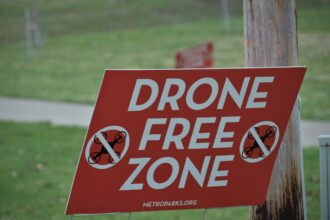The Cold War, a term that encapsulates a period of intense geopolitical tension, emerged in the aftermath of World War II, roughly spanning from 1947 to 1991. This era was characterized by the ideological struggle between two superpowers: the United States and the Soviet Union. The conflict was not fought through direct military engagement but rather through a series of indirect confrontations, political maneuvering, and psychological warfare.
The ideological divide between capitalism, championed by the United States, and communism, represented by the Soviet Union, set the stage for a global confrontation that would shape international relations for decades. As nations aligned themselves with either of the two superpowers, the world became increasingly polarized. The Cold War influenced not only military strategies but also economic policies, cultural exchanges, and social dynamics across the globe.
The fear of nuclear annihilation loomed large, creating an atmosphere of paranoia and suspicion that permeated everyday life. The Cold War was not merely a political struggle; it was a multifaceted conflict that affected every aspect of society, from education to entertainment, and left an indelible mark on the course of history.
Key Takeaways
- The Cold War was a period of political tension and military rivalry between the United States and the Soviet Union, lasting from the end of World War II to the early 1990s.
- The Arms Race and Nuclear Threat escalated tensions between the two superpowers, leading to the development of increasingly powerful and destructive weapons.
- The Space Race and Technological Advancements saw both countries competing to achieve milestones in space exploration and technological innovation, leading to significant advancements in science and technology.
- Proxy Wars and Global Conflicts were fought in various regions around the world, with the US and the Soviet Union supporting opposing sides, leading to widespread devastation and loss of life.
- The Economic Impact and Global Alliances of the Cold War led to the formation of military and economic alliances, shaping the global political landscape for decades to come.
The Arms Race and Nuclear Threat
One of the most alarming aspects of the Cold War was the arms race that unfolded between the United States and the Soviet Union. Both nations sought to amass vast arsenals of nuclear weapons, leading to a precarious balance of power known as Mutually Assured Destruction (MAD). This doctrine posited that neither side would initiate a nuclear conflict, as it would result in catastrophic consequences for both.
The race to develop more advanced weaponry became a defining feature of this period, with each superpower striving to outdo the other in terms of technological capabilities. The nuclear threat was not limited to military strategy; it seeped into the fabric of everyday life. Citizens in both countries lived under the shadow of potential annihilation, leading to widespread fear and anxiety.
Drills in schools taught children how to “duck and cover,” while adults were bombarded with government propaganda emphasizing the need for preparedness. The Cuban Missile Crisis in 1962 epitomized this tension, as the world teetered on the brink of nuclear war. The resolution of this crisis highlighted the precarious nature of international relations during the Cold War and underscored the importance of diplomacy in averting disaster.
The Space Race and Technological Advancements

The Cold War also spurred an intense competition in space exploration, known as the Space Race. This rivalry was not merely about scientific achievement; it was a demonstration of technological prowess and ideological superiority. The launch of Sputnik by the Soviet Union in 1957 marked a significant milestone, as it was the first artificial satellite to orbit Earth.
This event sent shockwaves through the United States, prompting fears that the Soviets had gained an upper hand in technology and military capabilities. In response, the United States accelerated its own space program, culminating in significant achievements such as the Apollo moon landing in 1969. This monumental event not only showcased American ingenuity but also served as a powerful symbol of victory in the ideological battle against communism.
The Space Race led to numerous technological advancements that extended beyond military applications, influencing fields such as telecommunications, medicine, and environmental science. The competition fostered innovation and collaboration among scientists and engineers, ultimately benefiting humanity as a whole.
Proxy Wars and Global Conflicts
| Proxy Wars and Global Conflicts | Metrics |
|---|---|
| Number of proxy wars currently ongoing | 10 |
| Number of countries involved in proxy wars | 20 |
| Number of casualties in proxy wars in the last year | 50,000 |
| Amount of military spending related to proxy wars | 100 billion |
As the Cold War unfolded, it became evident that direct confrontation between the superpowers was not feasible due to the threat of nuclear escalation. Instead, both nations engaged in proxy wars—conflicts where they supported opposing sides in regional disputes. These proxy wars often resulted in devastating consequences for the countries involved, as local populations bore the brunt of superpower rivalries.
Notable examples include the Korean War, Vietnam War, and conflicts in Afghanistan and Angola. In these proxy wars, ideology played a crucial role in shaping alliances and strategies. The United States often supported anti-communist regimes or insurgents, while the Soviet Union backed communist movements or governments.
This dynamic not only exacerbated existing tensions but also contributed to long-lasting instability in various regions. The legacy of these conflicts continues to influence global politics today, as many nations grapple with the repercussions of Cold War-era interventions.
Economic Impact and Global Alliances
The Cold War had profound economic implications that extended beyond military expenditures. Both superpowers sought to expand their influence through economic aid and development programs aimed at winning over nations in Africa, Asia, and Latin America. The United States implemented initiatives such as the Marshall Plan to rebuild war-torn Europe and promote capitalism, while the Soviet Union offered support to countries embracing communism.
These economic strategies were often tied to broader geopolitical goals. Nations aligned with either superpower were expected to adopt specific political ideologies and economic systems in exchange for aid. This led to the formation of global alliances such as NATO (North Atlantic Treaty Organization) and the Warsaw Pact, which further entrenched divisions between East and West.
The competition for influence also fueled economic disparities within regions, as countries aligned with one superpower often received preferential treatment over others.
Cultural and Social Impact

The cultural ramifications of the Cold War were far-reaching, influencing art, literature, music, and popular culture on both sides of the Iron Curtain. In the United States, anti-communist sentiment permeated society, leading to a cultural climate that often vilified anything associated with communism. This resulted in censorship and blacklisting within Hollywood and other artistic communities, stifling creativity and expression.
Conversely, Soviet culture sought to promote communist ideals through art and literature that glorified the state and its achievements. Writers like Aleksandr Solzhenitsyn emerged as voices of dissent, challenging the oppressive nature of Soviet rule through their works. The cultural exchange between East and West was limited but significant; jazz music became a symbol of freedom in Eastern Europe while Soviet films offered a glimpse into life behind the Iron Curtain for Western audiences.
This cultural interplay highlighted both the differences and similarities between societies shaped by opposing ideologies.
The Role of Propaganda and Media
Propaganda played a pivotal role during the Cold War as both superpowers sought to shape public perception and bolster their respective ideologies. Governments utilized various media outlets—newspapers, radio broadcasts, films—to disseminate information that aligned with their narratives while discrediting opposing viewpoints. In this environment, truth often became a casualty as sensationalism took precedence over factual reporting.
The media’s portrayal of events significantly influenced public opinion on both sides. In America, fear of communism led to widespread paranoia, exemplified by McCarthyism—a campaign against alleged communists within government and society. Meanwhile, Soviet propaganda painted a picture of American imperialism and moral decay.
This manipulation of information created an atmosphere of distrust that extended beyond national borders, complicating diplomatic relations and fostering hostility between nations.
Espionage and Intelligence Operations
Espionage became a hallmark of Cold War dynamics as both superpowers sought to gain an advantage through covert operations and intelligence gathering. Agencies like the CIA (Central Intelligence Agency) in the United States and the KGB (Committee for State Security) in the Soviet Union engaged in a relentless battle for information that often involved espionage tactics ranging from surveillance to infiltration. High-profile espionage cases captured public attention and underscored the lengths to which both sides would go to protect their interests.
Notable incidents included the U-2 incident in 1960 when an American spy plane was shot down over Soviet airspace, leading to heightened tensions between the two nations. The world of espionage was shrouded in secrecy; however, its impact on international relations was profound as intelligence operations shaped policy decisions and influenced military strategies throughout the Cold War.
The Impact on Developing Countries
The Cold War’s influence extended far beyond Europe and North America; developing countries found themselves caught in the crossfire of superpower rivalries. Many nations sought independence from colonial rule during this period but faced pressure from both sides to align with either capitalism or communism. This often resulted in internal conflicts fueled by external support from superpowers seeking to expand their influence.
Countries like Vietnam and Cuba became battlegrounds for ideological struggles as they navigated their paths toward self-determination amidst external pressures. The consequences were dire; civil wars erupted, economies were destabilized, and social structures were disrupted as local populations grappled with competing ideologies imposed from abroad. The legacy of these interventions continues to shape political landscapes in many developing nations today.
The Fall of the Soviet Union and the End of the Cold War
The Cold War began to unravel in the late 1980s as internal pressures within the Soviet Union mounted alongside external challenges from Western nations advocating for democracy and reform. Mikhail Gorbachev’s policies of glasnost (openness) and perestroika (restructuring) aimed at revitalizing the stagnant Soviet economy inadvertently accelerated calls for independence among various republics within the USSR. The fall of the Berlin Wall in 1989 symbolized not only a physical barrier being dismantled but also marked a significant turning point in global politics.
As Eastern European nations began to break free from Soviet control, it became evident that communism was losing its grip on power. By 1991, with the dissolution of the Soviet Union itself, the Cold War officially came to an end—a momentous shift that reshaped international relations for years to come.
Legacy and Continuing Impact of the Cold War
The legacy of the Cold War continues to resonate in contemporary geopolitics as nations grapple with issues rooted in this tumultuous period. The ideological divide established during this time has left lasting scars on international relations; tensions between Russia and Western nations remain palpable today as historical grievances resurface. Moreover, many conflicts that arose during the Cold War era continue to affect global stability—proxy wars have left deep-seated divisions within societies that persist long after foreign involvement has ceased.
The arms race has also left a legacy of nuclear proliferation concerns that challenge global security efforts today. In conclusion, while the Cold War may have officially ended over three decades ago, its impact is still felt across various dimensions—political, economic, cultural—shaping how nations interact with one another in an increasingly complex world.
When exploring video topic ideation for the Cold War, it’s essential to delve into various aspects that shaped this pivotal period in history. A related article that could provide valuable insights is available on the website “In The War Room.” This resource offers a comprehensive look at the strategic decisions and geopolitical tensions that defined the era. For more detailed information, you can visit the article by clicking on this link: In The War Room. This site could serve as an excellent starting point for generating engaging and informative video content about the Cold War.
CHECK THIS OUT! 📽️🎞️ Hollywood’s Secret War: How the CIA Rewrote Movies
FAQs
What is the Cold War?
The Cold War was a period of geopolitical tension between the United States and its NATO allies and the Soviet Union and its allies, lasting from the end of World War II in 1945 until the dissolution of the Soviet Union in 1991.
What were the main causes of the Cold War?
The main causes of the Cold War included ideological differences between the capitalist West and the communist East, competition for global influence, and the aftermath of World War II.
What were some key events of the Cold War?
Key events of the Cold War included the Berlin Airlift, the Korean War, the Cuban Missile Crisis, and the construction of the Berlin Wall.
How did the Cold War affect global politics and society?
The Cold War had a significant impact on global politics and society, leading to the division of Europe, the arms race, and the spread of proxy wars in various regions of the world.
What are some potential video topics related to the Cold War?
Potential video topics related to the Cold War could include the origins of the conflict, key events and turning points, the impact on culture and society, and the legacy of the Cold War in the modern world.




